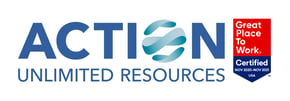Healthcare patients have more information than ever about the facilities they decide to frequent. Between Google reviews, ZocDoc, and other sites, it’s become easier for patients to share their experiences and encourage (or warn) other patients about using an organization’s services. Patient satisfaction can be garnered in a number of ways, including price point and customer service, but the number one way to generate increased patient satisfaction is often overlooked: facility cleanliness.
Healthcare facility cleanliness is the foundation on which a positive experience is based. These buildings have a number of spaces that need specialized attention, including sites that see blood, bodily fluids, and infectious patients. Proper cleaning prevents the spread of infection, can reduce the risk of patient falls, and reduces opportunities for cross-contamination. However, even the most mundane areas of healthcare facilities need a complete level of care. These include patient rooms, check-in areas and waiting rooms, bathrooms, and even hallways and floors.
When you’re dealing with patient care and trying to minimize healthcare-associated infections (HAIs), there’s no such thing as ‘too clean.’ Perhaps more important than actual cleanliness is the patient’s perception of how clean the facility is. This can affect your facility’s brand and reputation, which has a clear impact on how many patients decide to frequent your facility.
In a study done by the NHS, patient perceptions of cleanliness had less to do with how clean the facility actually was and more to do with how clean the facility appeared. Since patients rarely have information on cleaning techniques and schedules, they can only make their assessments based on if surfaces appear to be clean and modern, if staff are put together and professional, and if cleaning crews are present throughout the hospital.
This doesn’t mean that you can only focus on appearances. There are two main ways to verify cleanliness in your healthcare facility. One is manually, through visual checks and implementing cleaning schedules. The second is through advanced technology that scientifically confirms a lack of infectious microbes on surfaces throughout the facility. Let’s take a more in-depth look at these.
Historically, a healthcare facility’s cleanliness has been measured by visual checks and audits of cleaning schedules. If things seem clean and a supervisor can confirm that the Facilities department has adhered to a set schedule, no further questions are raised outside of one-off situations that require more attention. This process leaves much room for error because it is inconsistent and subjective and can put patients at risk for picking up infectious diseases.
A more effective way of ensuring facility cleanliness is through an ATP system that can confirm the presence of bacteria or viruses on any surface. ATP verification systems work by swabbing a surface, placing the sample into a monitor, and measuring the level of contaminants present. This can assist facility managers by giving them data-driven insights into the effectiveness of existing cleaning techniques to identify hot zones and minimize risk for HAIs. However, a quality-assurance specialist still should use visual observation to determine if the rest of the room has been cleaned thoroughly.
It’s always better to have more data when verifying cleanliness for patient health and satisfaction. In addition to ATP data, healthcare facilities can use customer satisfaction surveys to assess how patients felt about the level of cleanliness and develop improvement plans from there.
If you’re a healthcare facility manager, reach out to Action today to find out how you can partner with our industry experts to ensure that your facility is at the top of its game to ensure that your patients feel safe and secure.



Enjoy this blog? Leave a comment or ask a question!